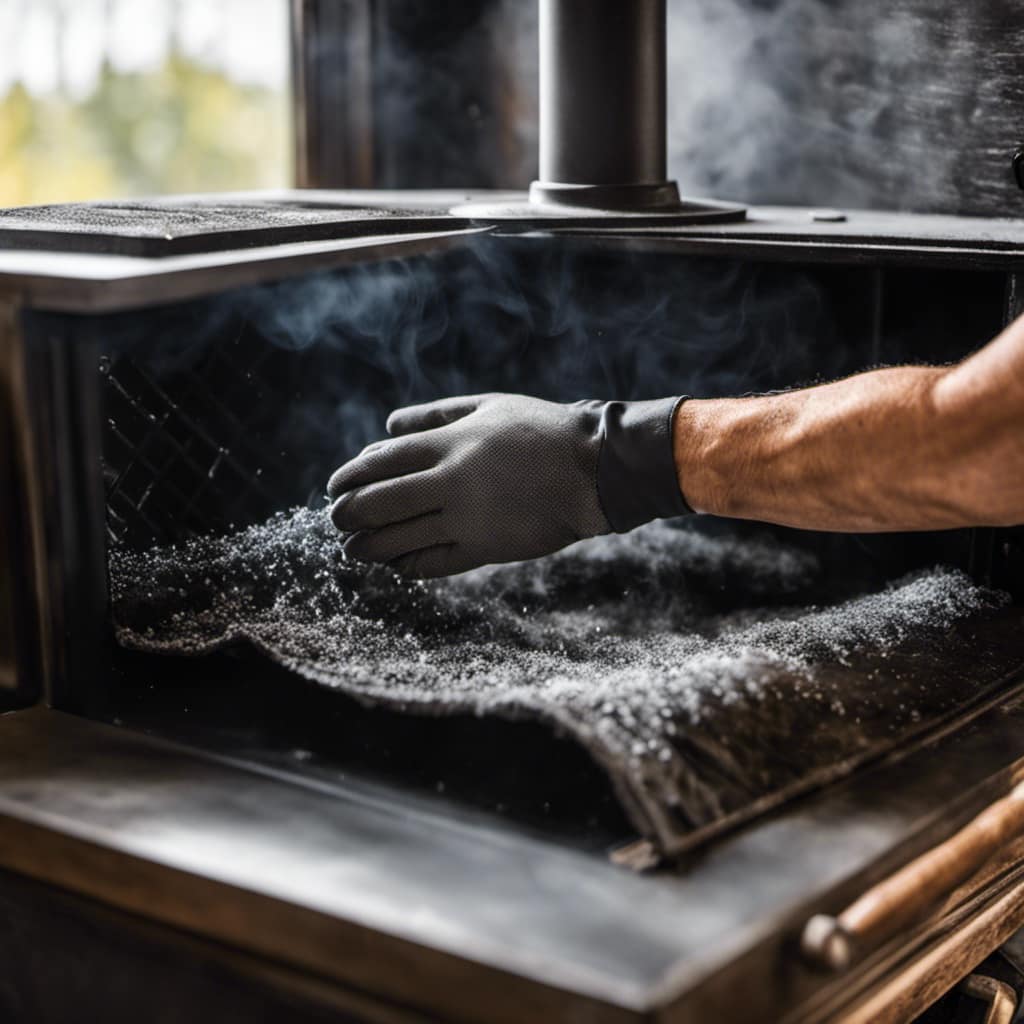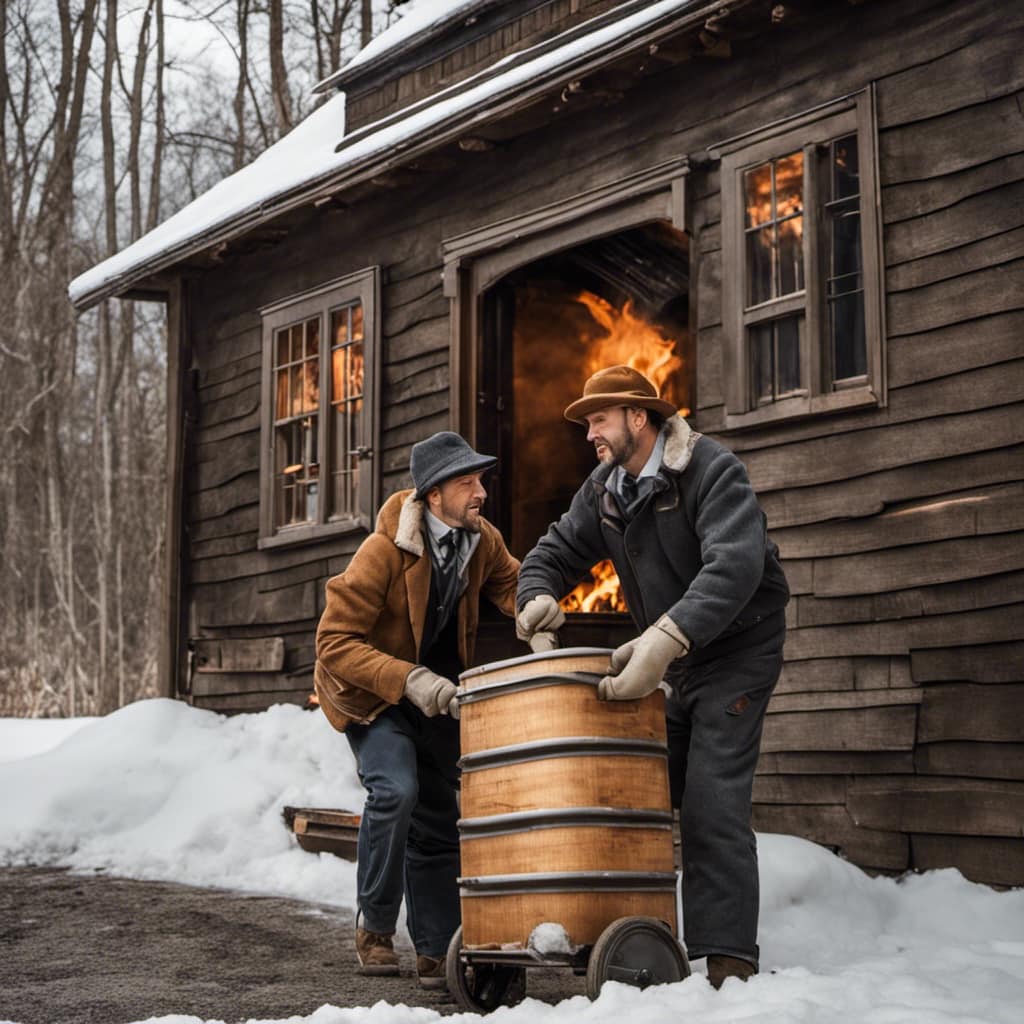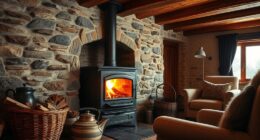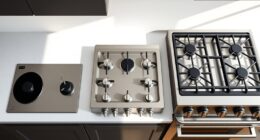Let me tell you all, there is nothing more frustrating than a wood stove that doesn’t vent properly. When smoke starts filling the room instead of going up the chimney, it can be really aggravating.
But fear not, because I’ve got the answers you need. In this article, we’ll dive into the common causes of poor wood stove ventilation, the signs to look out for, and some troubleshooting tips to get that stove back on track.
Let’s get this fire roaring safely, shall we?
Key Takeaways
- Poor wood stove ventilation can be caused by creosote buildup, improper maintenance, using unseasoned or wet wood, and lack of regular chimney cleaning.
- Signs of inadequate venting include smoke inside the house, a strong smell of burnt wood, decreased indoor air quality, reduced energy efficiency, and increased environmental impact.
- Proper ventilation is important for maintaining good indoor air quality, maximizing energy efficiency, preventing health issues, achieving optimal heat output, and minimizing fuel consumption.
- To maintain proper ventilation, regularly clean the chimney and flue, use properly sized and installed vent pipes, ensure a sufficient air supply, install and maintain carbon monoxide detectors, and schedule professional inspections and cleanings.
Common Causes of Poor Wood Stove Ventilation
I’ve noticed that one common cause of poor wood stove ventilation is the buildup of creosote in the chimney.

Creosote is a sticky, flammable substance that forms when wood is burned. Over time, it accumulates on the walls of the chimney, restricting airflow and reducing the stove’s ability to properly vent.
This buildup is often a result of improper wood stove maintenance. Many people make the mistake of not regularly cleaning their chimney, allowing creosote to build up to dangerous levels.
Additionally, using unseasoned or wet wood can contribute to the formation of creosote.
It’s important to properly maintain your wood stove by regularly cleaning the chimney and using dry, seasoned wood to prevent the buildup of creosote and ensure proper ventilation.

Signs and Symptoms of Inadequate Venting
One sign of inadequate venting is the presence of smoke inside the house, and another is the strong smell of burnt wood. These indicators not only affect the air quality indoors but also have a significant impact on the energy efficiency of your wood stove.
Here are three key effects of inadequate venting on indoor air quality and the impact of poor wood stove ventilation on energy efficiency:
-
Decreased Indoor Air Quality:
Inadequate venting can lead to a buildup of pollutants, such as carbon monoxide and particulate matter, in the air. These pollutants can cause respiratory issues, allergies, and even serious health problems. -
Reduced Energy Efficiency:
Poor wood stove ventilation can result in incomplete combustion, leading to wasted fuel and reduced heat output. This not only affects the comfort of your home but also increases your energy consumption and utility bills.
-
Increased Environmental Impact:
Inefficient wood stove ventilation contributes to higher emissions of greenhouse gases and pollutants, negatively impacting the environment and contributing to climate change.
It is crucial to ensure proper venting to maintain good indoor air quality and maximize the energy efficiency of your wood stove. Regular maintenance and professional inspections can help address any ventilation issues and ensure optimal performance.
Understanding the Importance of Proper Ventilation
I understand that proper ventilation is essential for maintaining good indoor air quality and maximizing the energy efficiency of my wood stove. Without adequate ventilation, harmful gases and particles can accumulate, leading to poor air quality and potential health issues. Additionally, proper ventilation ensures that the wood stove operates efficiently, providing optimal heat output while minimizing fuel consumption. To help you understand the importance of proper ventilation, I have compiled a table outlining some ventilation maintenance tips and the benefits of proper wood stove ventilation:
| Ventilation Maintenance Tips | Benefits of Proper Wood Stove Ventilation |
|---|---|
| Regularly clean chimney and flue | Improved indoor air quality |
| Use properly sized and installed vent pipes | Enhanced energy efficiency |
| Ensure a sufficient air supply | Reduction in creosote buildup |
| Install and maintain carbon monoxide detectors | Prevention of carbon monoxide poisoning |
| Schedule professional inspections and cleanings | Extended lifespan of the wood stove |
Troubleshooting Tips for Improving Wood Stove Ventilation
To improve wood stove ventilation, regularly cleaning the chimney and flue is essential for optimal performance. Here are some troubleshooting tips for improving wood stove ventilation:

-
Check for obstructions: Inspect the chimney and flue for any debris, such as bird nests or creosote buildup, that may be blocking the airflow. Clear any obstructions to ensure proper ventilation.
-
Adjust the damper: The damper controls the amount of air entering the stove. If your stove isn’t venting properly, check if the damper is fully open or if it needs adjustment. A partially closed damper can restrict airflow and reduce ventilation.
-
Use dry wood: Wet or unseasoned wood produces more smoke, reducing the efficiency of your wood stove. Make sure to use dry, well-seasoned wood for optimal performance and better ventilation.
Professional Solutions for Resolving Venting Issues
Hiring a certified chimney sweep can provide professional solutions for resolving venting issues. When it comes to alternative heating options like wood stoves, proper venting is crucial for efficient and safe operation.

If you notice that your wood stove isn’t venting properly, it’s important to address the issue promptly to avoid potential hazards. Hiring a chimney sweep who’s knowledgeable in venting systems can help diagnose and resolve the problem. They can inspect the chimney, flue, and other components to ensure that there are no blockages or obstructions hindering the airflow.
Additionally, a chimney sweep can provide cleaning services to remove any creosote buildup, which can also affect venting. By hiring a professional, you can ensure that your venting issues are resolved effectively and efficiently.
Conclusion
In conclusion, ensuring proper ventilation is crucial for the efficient operation of your wood stove. Neglecting this aspect can lead to a variety of issues, such as poor combustion, excessive smoke, and even potential health hazards.
By troubleshooting and addressing common causes of inadequate venting, you can optimize the performance of your wood stove and create a safer and more enjoyable environment.

Remember, ‘Don’t throw the baby out with the bathwater’ – don’t give up on your wood stove before exploring ventilation solutions.
Growing up surrounded by the vast beauty of nature, Sierra was always drawn to the call of the wild. While others sought the comfort of the familiar, she ventured out, embracing the unpredictable and finding stories in the heartbeat of nature.
At the epicenter of every remarkable venture lies a dynamic team—a fusion of diverse talents, visions, and passions. The essence of Best Small Wood Stoves is crafted and refined by such a trio: Sierra, Logan, and Terra. Their collective expertise has transformed the platform into a leading authority on small wood stoves, radiating warmth and knowledge in equal measure.











